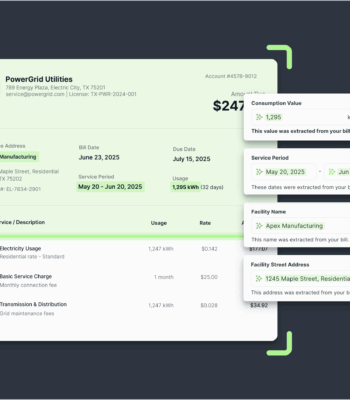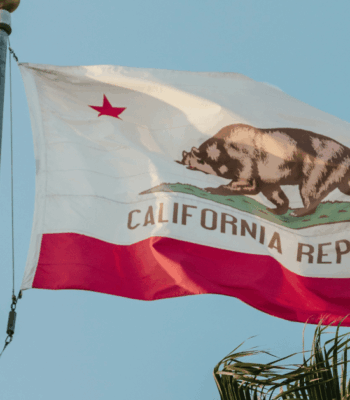Optera recently launched Operator, our reimagined software platform for enterprise climate programs to measure, report, and reduce their scope 1-3 emissions. One of its many upgrades includes AI-powered data ingestion. The platform now uses machine learning and AI to speed up, automate, and streamline the process of inputting energy consumption data into the platform.
We sat down with Katy McNeill, the Staff Product Manager who leads our product strategy for Operator, to learn more about this feature and how it came to be. Read on for a summary of our conversation.
Let’s look under the hood a bit. What technologies are we now applying in Operator that enable such seamless data entry?
Our data ingestion tools use two forms of ML/AI – Ocular character recognition (OCR) and AI. When you upload a bill file, OCR scans that bill for the relevant consumption data and extracts it from the image or PDF file. From there, we use AI to map all of this data to its associated records in Operator, map to the relevant emissions factors, and calculate the end emissions figure. These technologies, paired together, take over the heavy lift of manually reading each file and inputting those values into the platform, saving time and improving data accuracy while also reducing the need for spreadsheets.
As we know, AI is a relatively new technology that already has many applications. How did you and the team choose data ingestion as the first problem to solve with this technology?
We run market research to prioritize our product roadmap, including many discussions with our current users. From this research, we focused on validating:
- Where our users saw the highest potential (and biggest risks) for AI within the carbon accounting process
- Which steps in the carbon accounting process felt the most time-consuming and tedious
From this research, we learned that the biggest initial impact we could make was to solve how data was getting into the system. For some organizations, our data ingestion API is the right solution. But not all clients have the resources to build to API specs. For those who don’t, we determined that AI and machine learning would be the perfect application to automate and speed up that data ingestion process.
Across testing and client usage, you’ve already seen some impressive results with the technology reading unusual files. Can you tell us about one of them?
We’ve been really impressed with the wide range of bills and edge cases that the technology can decipher – from bills in a variety of languages to convoluted image files. In one case, the uploaded bill included a large number of detailed consumption values for the time period, with no total amount listed. Amazingly, the technology knew to sum up the relevant values and did so correctly. Knowing which kWh values to ignore and which to include – it was pretty cool and saved a ton of manual time!
This feature is a significant time-saver for our clients. What are some of the other benefits clients can expect from using this feature?
The time savings are huge, but I’m also excited about how this workflow supports greater accuracy and audibility. By inputting the source file directly, the platform cuts out the middle step of compiling data into spreadsheets, which is rife with the potential for human error. And, the platform saves the source data directly in Operator, alongside its related emissions values, to support QA and annual inventory verifications.
Let’s hear more about you. How did you end up at Optera?
I found Optera through some former colleagues (and friends!), and was excited about the potential to work in product at a company where I felt I could make a tangible impact. Before Optera, I worked in agriculture and fintech with migrant farm workers across the US, so I was thrilled to land a role at a place with an equally important mission.
What’s something you do outside of work that keeps you connected to the fight against climate change?
When I think about it, almost everything I do outside of work connects to the fight against climate change in one way or another. I co-own an abandoned ranch in western Colorado, and we’re in the early phases of implementing restorative agriculture practices to revive the land and water systems. This will lay the literal groundwork to bring back a natural and perennial ecosystem to this land that for over a hundred years has been farmed and ranched using unsustainable practices. Within 5 years, we hope to have the land contributing to raising water levels for the headwaters of the Colorado River, as opposed to reducing them, for the first time in her history.
Outside of the ranch, I also volunteer my time in politics and campaigns that are dedicated to passing laws and regulations to help fight climate change on a global and local level.


